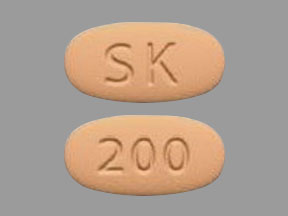Cenobamate Disease Interactions
There are 4 disease interactions with cenobamate.
Cenobamate (applies to cenobamate) short QT syndrome
Major Potential Hazard, Moderate plausibility.
Cenobamate causes QT interval shortening. The use of this drug is contraindicated in patients with familial short QT syndrome, as it is associated with an increased risk of sudden death and ventricular arrhythmias, particularly ventricular fibrillation.
Antiepileptics (applies to cenobamate) suicidal tendency
Moderate Potential Hazard, Moderate plausibility. Applicable conditions: Depression, Psychosis
Antiepileptic drugs (AEDs) have been associated with an increased risk of suicidal thoughts or behavior in patients taking these drugs for any indication. Pooled analyses of 199 placebo-controlled clinical studies involving the use of 11 different AEDs showed that patients receiving AEDs had approximately twice the risk of suicidal thinking or behavior compared to patients receiving placebo. AEDs should be administered cautiously in patients with depression or other psychiatric disorders; phentermine-topiramate should be avoided in patients with history of suicidal attempts or active suicidal ideation. The risk of suicidal thoughts and behavior should be carefully assessed against the risk of untreated illness, bearing in mind that epilepsy and many other conditions for which AEDs are prescribed are themselves associated with morbidity and mortality and an increased risk of suicidal thoughts and behavior. Patients, caregivers, and families should be alert to the emergence or worsening of signs and symptoms of depression, any unusual changes in mood or behavior, or the emergence of suicidal thoughts or behavior. If patients have symptoms of suicidal ideation or behavior, a dosage reduction or treatment discontinuation should be considered.
Cenobamate (applies to cenobamate) hepatic dysfunction
Moderate Potential Hazard, Moderate plausibility. Applicable conditions: Liver Disease
Cenobamate should be used with caution in patients with mild to moderate hepatic dysfunction. Consider a dosage reduction in these patients, with a maximum recommended dosage of 200 mg once a day. The use in patients with severe hepatic dysfunction is not recommended.
Cenobamate (applies to cenobamate) renal dysfunction
Moderate Potential Hazard, Moderate plausibility.
Cenobamate should be used with caution and dosage reduction may be considered in patients with renal dysfunction. The use in patients with end-stage renal disease undergoing dialysis is not recommended.
Switch to professional interaction data
Cenobamate drug interactions
There are 585 drug interactions with cenobamate.
Cenobamate alcohol/food interactions
There is 1 alcohol/food interaction with cenobamate.
More about cenobamate
- cenobamate consumer information
- Check interactions
- Compare alternatives
- Reviews (55)
- Side effects
- Dosage information
- During pregnancy
- Drug class: carbamate anticonvulsants
- Breastfeeding
- En español
Related treatment guides
Drug Interaction Classification
| Highly clinically significant. Avoid combinations; the risk of the interaction outweighs the benefit. | |
| Moderately clinically significant. Usually avoid combinations; use it only under special circumstances. | |
| Minimally clinically significant. Minimize risk; assess risk and consider an alternative drug, take steps to circumvent the interaction risk and/or institute a monitoring plan. | |
| No interaction information available. |
See also:
Further information
Always consult your healthcare provider to ensure the information displayed on this page applies to your personal circumstances.


